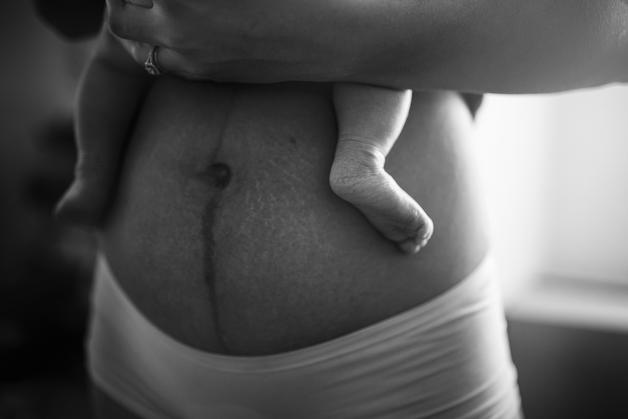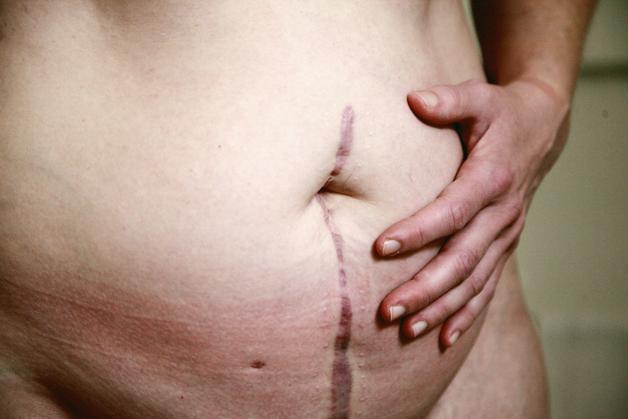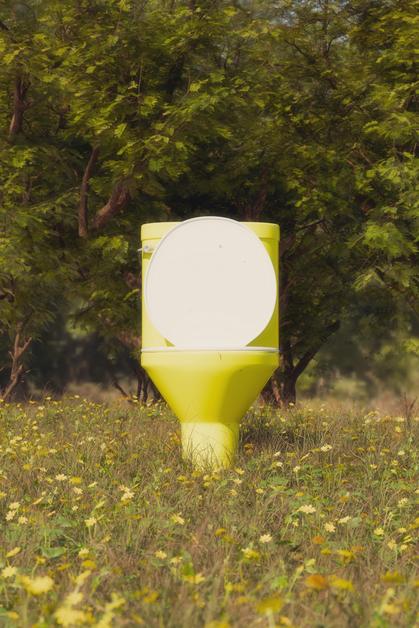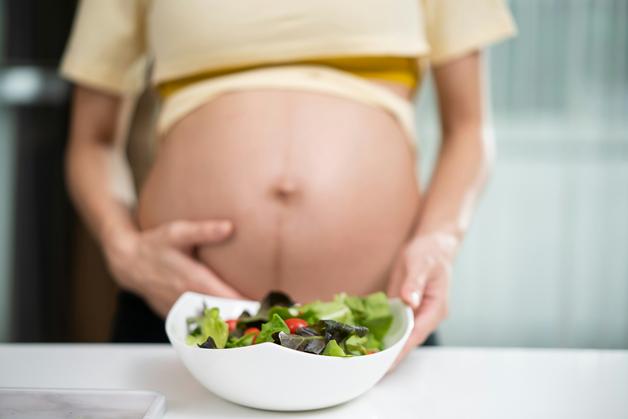Wondering why your skin seems to be rewriting its own history as your pregnancy progresses? Pregnancy stretch marks have a remarkable way of capturing attention—sometimes stealthy and subtle, other times boldly etched across the abdomen, hips, or even breasts. For many parents-to-be, these marks spark questions, anxieties, and even a torrent of mixed emotions. Does diligent skin care really make a difference? Are heredity and hormones inescapable culprits? Is there a silver lining to these changes your body undergoes? Navigating the journey from first itch to lasting mark, you’re likely searching for comfort and answers backed by both science and lived parental experience. Each of these concerns finds its place in the exploration that follows: mechanisms behind pregnancy stretch marks, what influences their appearance, practical prevention, trusted treatments, and balanced strategies for emotional well-being.
What Are Pregnancy Stretch Marks? Understanding the Science Behind Skin Changes
Pregnancy stretch marks (technically identified as striae gravidarum) are a classic byproduct of rapid body transformation—streaks or stripes that might meander across your midsection or suddenly map out new paths along your thighs. Collagen and elastin—the structural fibers embedded deep in the dermis (the supportive middle layer of the skin)—are called upon to accommodate a rapidly expanding belly. But there’s only so far they can stretch before microscopic tears occur.
What triggers these transformations? It’s not just about how quickly you grow or how many moisturizers line your bathroom shelf. The interplay is intricate: rising levels of cortisol and estrogen change the way your skin behaves, making its connective tissue more fragile and less able to rebound under tension. Genetically, some skin types just have fewer defenses against stretch. Pregnancy stretch marks are not merely cosmetic—they’re visible reminders of deep-cut biological change.
You might notice the earliest lines as red or purplish streaks, sometimes a bit swollen, reflecting active inflammation in the skin. Over months, they typically fade to a silvery or whitish hue—a sign that your body is working behind the scenes to remodel collagen. Yet, despite how their story unfolds, these marks are nearly always permanent.
Why Do Pregnancy Stretch Marks Occur? A Closer Look at Causes and Risk Factors
Not all parents will experience pregnancy stretch marks, and that uneven distribution often feels mysterious. Science, however, paints a more tangible picture.
- Hormonal shifts: Pregnancy propels the body into a hormonal whirlwind. Increased cortisol, for example, directly weakens the skin’s elastic fibers.
- Genetic background: If stretch marks run in the family, your skin structure may be naturally predisposed—drier, less supple, or simply less adaptable.
- Rapid physical changes: Growing a baby comes with rapid expansion of the abdomen, breasts, and hips. The skin cannot always keep up, despite your best efforts.
What about external care? While moisturizers like shea butter or almond oil can boost comfort and help maintain skin softness, they cannot override basic biology. Cellular adaptability, not just topical hydration, sets the stage for how your skin responds.
Where Will Pregnancy Stretch Marks Appear? Mapping the Most Common Areas
The silhouette of pregnancy is unmistakable—and so too is the typical landscape for pregnancy stretch marks. The abdomen claims first place, given its essential role in accommodating the growing uterus. Yet, the breasts (often overlooked), hips, thighs, and even the lower back may also become canvases for new marks. Rapid growth, multiple pregnancies, or twin gestations can intensify the phenomenon, widening both the range and depth of the marks.
Recognizing the Phases: From Red to White
At first, stretch marks emerge as thin, sometimes angry streaks—red, purple, and slightly raised. The underlying biology? Blood vessels showing through thin skin, signaling ongoing tissue stress and microtearing. Over time, as collagen is remodeled and inflammation fades, the lines settle into a paler, flatter stage. Some find the change reassuring—marks become less dramatic. Yet, the tough, fibrous remnants are there for the long term. Pregnancy stretch marks rarely disappear completely, but their evolution is a testament to your skin’s healing efforts.
Can You Prevent Pregnancy Stretch Marks? Separating Fact from Fiction
You may have encountered bold claims—creams that promise “miraculous” prevention or home remedies hailed as foolproof. Reality is, the story is more nuanced.
Here’s what research and medical consensus agree on:
- Intensive skin hydration: Regular application of rich emollients—think shea butter, argan oil, or almond oil—helps your skin maintain some flexibility.
- Gentle massage: Circular massage not only feels soothing but promotes microcirculation, supporting product absorption.
- Consistent internal hydration: Water intake matters; well-hydrated skin shows greater resistance.
- Gradual weight gain: Following a healthcare professional’s guidance on nutrition and weight gain minimizes abrupt skin stretching.
- Balanced nutrition: Nutrients such as vitamin C (vital for collagen rebuilding), vitamin E, and healthy fats create a physiological backbone for skin strength.
- Regular, gentle physical activity—for example, walking or swimming—promotes circulation and muscle tone.
No intervention can offer complete protection if you are genetically predisposed or subjected to hormonal extremes. Nevertheless, integrating these rituals early—ideally before the first lines emerge—can provide comfort and possibly reduce the severity of pregnancy stretch marks.
Early Signs and Daily Management: How to React
Do you notice itching, tightness, or tiny pink lines? Acting quickly can make a difference in comfort. Early-phase marks respond well to deep hydration and gentle massage. Drinking water, applying moisturizer, and even a brief, gentle exfoliation can all foster a healthier skin environment. For some, these rituals become cherished moments of mindfulness, offering reassurance as their body shifts.
If itching intensifies or the area develops a widespread rash, it’s important to check in with a healthcare professional. While pregnancy stretch marks are typically harmless, other dermatological conditions can masquerade as similar symptoms.
Distinguishing Stretch Marks from Other Skin Changes
Not every new mark is a stretch mark. Polymorphic eruption of pregnancy (PUPPP), for instance, creates intensely itchy red bumps or hives, a pattern quite unlike the slender, isolated lines of stretch marks. If you’re ever in doubt—especially with sudden, widespread skin changes—a medical review offers clarity.
What’s the Fate of Pregnancy Stretch Marks After Delivery?
Pregnancy stretch marks become part of your postpartum story. While their initial color will fade, leaving behind narrow, silvery scars, they seldom vanish. For some, this permanence inspires acceptance—a mark of resilience and nurture that tells its own tale. Others may feel drawn toward cosmetic solutions.
Continuing a regimen of moisturizing and massage helps support skin recovery. Those seeking more intensive results might explore:
- Laser therapy—targeting blood vessels and stimulating new collagen.
- Microneedling—tiny pinpricks mobilize your own tissue repair.
- Microdermabrasion—mechanical resurfacing intended to smooth and rejuvenate skin texture.
- Retinoid creams—prescribed only after pregnancy and breastfeeding, these foster collagen formation, sometimes lessening fresh marks.
No single method erases pregnancy stretch marks—results fluctuate depending on skin type, timing, depth, and your body’s own biological rhythms.
Emotional Impact: Body Image and Self-Compassion
Confronting pregnancy stretch marks can be emotionally intense. Societal pressure to uphold ideals of perfect skin can stoke frustration, grief, or even guilt. Yet, each mark underscores your body’s power to adapt and nurture. Many find comfort in peer support—stories shared among parents reveal a tapestry of strength and solidarity that no photo filter can conceal.
Professional support, whether from a counselor or support group, helps many navigate shifting self-image. Celebrating your marks as badges of motherhood transforms skin care into both a physical and emotional affirmation.
Myths, Facts, and Honest Answers About Pregnancy Stretch Marks
Curious if pregnancy stretch marks are preventable with the perfect cream? Not quite. While topical care matters for comfort, the core drivers—genetics, hormonal shifts, and tissue mechanics—steer the process.
Key points:
- Creams and oils improve hydration, not prevention.
- Stretch marks are not unique to pregnancy—puberty, weight change, and even certain medical therapies can set them in motion.
- Marks typically persist after pregnancy, fading but rarely disappearing.
- No one’s “fault”—skin care routines play a supporting role, but structural factors dominate.
- Medical treatments (such as lasers and microneedling) can help fade marks, although erasure is a rare outcome and results will vary.
Key Takeaways
- Pregnancy stretch marks reflect a dynamic blend of skin stretching, hormonal shifts, and genetics—no single factor explains their story.
- Hydration, balanced nutrition, and moderate weight gain provide the best physiological support, but can’t guarantee prevention.
- Regular rituals of skin care and gentle activity offer comfort, slight risk reduction, and emotional grounding.
- Medical treatments post-pregnancy may reduce their appearance; complete “removal” is unrealistic.
- Support exists for parents experiencing self-esteem challenges or emotional distress related to stretch marks—professionals can help navigate these feelings.
- Embracing your body’s changes—scars, stripes, curves—fosters resilience and turns skin care into an act of empowerment.
- For personalized parental guidance, trusted medical questionnaires, and tailored advice, download the Heloa app for free.
Let each mark tell a story—not just of skin stretched to its limits, but of a body’s resilience and a parent’s journey with all its transformations.
Questions Parents Ask
Are pregnancy stretch marks itchy or painful?
It’s quite common to notice some itching where pregnancy stretch marks are developing. This sensation usually comes from the skin stretching and becoming a bit dry. While mild discomfort might occur, pain is unusual. Hydrating the skin with nurturing creams or oils can bring a gentle sense of relief. If you notice intense or spreading discomfort, or see a rash, it’s always wise to check in with a healthcare professional to rule out other skin concerns.
Can sun exposure affect the appearance of pregnancy stretch marks?
Yes, sun exposure can have an impact on stretch marks. When newly formed, these marks can darken quickly with sunlight, making them more noticeable and sometimes prolonging their redness or purple hue. Gently protecting your skin with clothing or pregnancy-safe sunscreen can help stretch marks fade more harmoniously over time. Taking care to shield sensitive skin supports a smoother recovery process and helps minimize additional discoloration.
Is it possible for pregnancy stretch marks to disappear completely?
While many parents wish for stretch marks to go away entirely, these marks often become less visible but rarely disappear completely. Over months or years, they tend to soften, thin out, and adopt a lighter, silvery appearance. The journey is different for everyone—skin type, age, and genetics all play a role. With time and care, the marks usually blend in more with the surrounding skin, becoming a quiet reminder of the changes your body has embraced.

Further reading:









